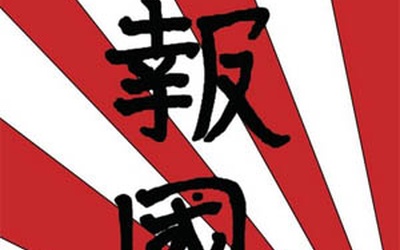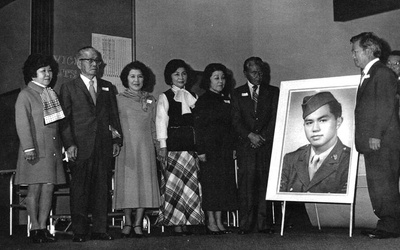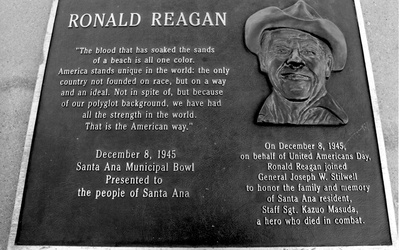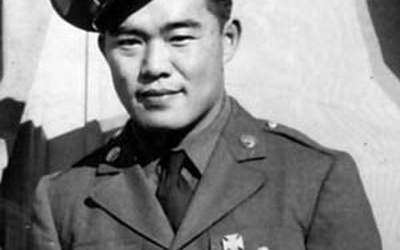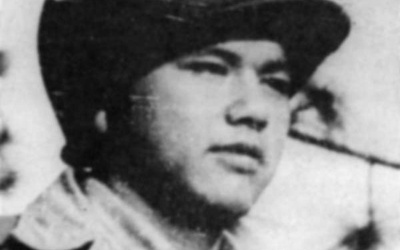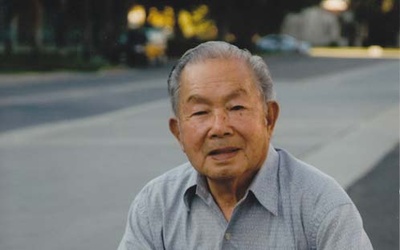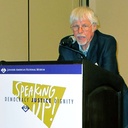
Arthur A. Hansen
@Art_HansenArt Hansen is Professor Emeritus of History and Asian American Studies at California State University, Fullerton, where he retired in 2008 as the director of the Center for Oral and Public History. Between 2001 and 2005, he served as Senior Historian at the Japanese American National Museum. Since 2018, he has authored or edited four books that focus on the topic of the resistance by Japanese Americans to their unjust World War II oppression by the US government.
Updated August 2023
Stories from This Author
The Harada House of Riverside, California: A Milestone in Japanese American Resistance to Racist Oppression - Part 1 of 6
Feb. 18, 2013 • Arthur A. Hansen
(Presentation at the Riverside Metropolitan Museum, in Riverside, California, on October 20, 2012, for a program to celebrate publication of Mark Howland Rawitsch’s 2012 book, The House on Lemon Street: Japanese Pioneers and the American Dream, published by the University Press of Colorado in the Lane Hirabayashi-edited NIKKEI IN THE AMERICAS series) Much like houses and homes, intellectual projects and professional careers are works in progress, social constructions enacted over time and contingent upon such circumstantial factors as people and …
BETRAYED TRUST: The Story of a Deported Issei and His American-born Family during World War II - Foreword Part 2
Jan. 31, 2013 • Arthur A. Hansen
Read Part 1 >> As one who was a close friend of Michi Weglyn’s, I am quite sure that if alive today she would be championing the current publication of Betrayed Trust. “Proof” for this assertion can be found in something she wrote in June 1998, a year before her death, and which was read, in her absence, at the July 2, 1998, opening ceremony of the Tule Lake Pilgrimage. Her statement, later published, in 2000, as the preface to the …
BETRAYED TRUST: The Story of a Deported Issei and His American-Born Family During World War II - Foreword Part 1
Jan. 24, 2013 • Arthur A. Hansen
Betrayed Trust: The Story of a Deported Issei and His American-born Family during World War II is a truly remarkable book. While there are now extant numerous published studies (fiction as well as non-fiction) that illuminate the controversial Tule Lake Segregation Center, Betrayed Trust is the first book-length manuscript to interpret it via the fascinating perspective of a key leader in that concentration camp’s much demonized but little understood (and actually quite diverse and fiercely contested) resegregation movement). The book’s …
Nikkei Agriculture in Orange County, California, the Masuda Farm Family, and the American Way of Redressing Racism - Part 6 of 6
Dec. 28, 2012 • Arthur A. Hansen
Read part 5 >> But there is still more to the Masuda family story. In 1948 when Kazuo’s remains had been disinterred from his grave in Italy and shipped to the United States for reburial in his native Orange County, the family had a rude surprise when they met with the manager of the Westminster Memorial Cemetery to make burial arrangements. He informed the family that the cemetery was a racially restricted one, and this meant that Sergeant Kazuo Masuda could not …
Nikkei Agriculture in Orange County, California, the Masuda Farm Family, and the American Way of Redressing Racism - Part 5 of 6
Dec. 21, 2012 • Arthur A. Hansen
Read part 4 >> On December 18, 1944, the U.S. Supreme Court’s decision in the Endo v. the United States of America case unanimously determined that the government could no longer detain Japanese American citizens which the government had conceded as being loyal to the United States. This decision helped lead to the re-opening of the West Coast for resettlement by Japanese Americans in 1945. However, many among the 80,000 still imprisoned in the War Relocation Authority camps were reluctant to …
Nikkei Agriculture in Orange County, California, the Masuda Farm Family, and the American Way of Redressing Racism - Part 4 of 6
Dec. 14, 2012 • Arthur A. Hansen
Read part 3 >> By late December of 1941, the armed services ceased accepting Japanese Americans either as volunteers or draftees, even though the Selective Service Act barred discrimination. Consistent with this discriminatory policy, Nisei were classified not as 1-A, but rather as 4-C, the classification assigned to “enemy aliens.” In response to a great deal of agitation from the old anti-Japanese forces in California and elsewhere on the West Coast and in scattered parts of the United States, on February …
Nikkei Agriculture in Orange County, California, the Masuda Farm Family, and the American Way of Redressing Racism - Part 3 of 6
Dec. 7, 2012 • Arthur A. Hansen
Read part 2 >> Even before Japan’s December 7, 1941, bombing of the U.S.’ Hawaiian naval station at Pearl Harbor, then home to the main part of the American fleet, precipitated the Masuda family’s eventual exclusion from designated West Coast military areas, along with the rest of the approximately 2000 other Orange Countians of Japanese descent, some of the county’s Nisei were required to exchange their agricultural attire for military apparel. This occurred because of the passage by Congress of the …
Nikkei Agriculture in Orange County, California, the Masuda Farm Family, and the American Way of Redressing Racism - Part 2 of 6
Nov. 30, 2012 • Arthur A. Hansen
Read part 1 >> Having now provided a snapshot of the pre-World War II Japanese American community in Orange County during the so-called “Issei Pioneer Era,” we need to shift our attention to the main focus of my presentation tonight, which I have titled “Nikkei Agriculture in Orange County, California, the Masuda Farm Family, and the American Way of Redressing Racism.” Based on two oral history interviews done in 2006 with Masao “Mas” Masuda by, respectively, Susan Shoho Uyemura, for the …
Nikkei Agriculture in Orange County, California, the Masuda Farm Family, and the American Way of Redressing Racism - Part 1 of 6
Nov. 23, 2012 • Arthur A. Hansen
(Presentation at a public program in support of New Birth of Freedom: Civil War to Civil Rights in California at the Orange County Agricultural and Nikkei Heritage Museum, Fullerton Arboretum, California State University, Fullerton on October 19, 2011)As we gather here this evening next to a building called the Orange County Agricultural and Nikkei Heritage Museum, we need to reflect on the integral relationship between the history of Orange County agriculture and that of the county’s Americans of Japanese ancestry. …
Peculiar Odyssey: Newsman Jimmie Omura’s Removal from and Regeneration within Nikkei Society, History, and Memory - Part 7 of 7
Sept. 28, 2012 • Arthur A. Hansen
Read Part 6 >> The early 1980s activity had ramifications for Omura, who had been “reborn in Seattle.”1 Hohri invited him to speak in Chicago and there avail himself of research material amassed by NCJAR (for which he, along with other notable wartime resisters like Harry Ueno, became a substantial backer)2 for his in-progress memoir. San Francisco and Los Angeles vernaculars commissioned Omura to write editorials,3 while UCLA’s Asian American Studies Center wooed his participation in conferences and panels and solicited …



